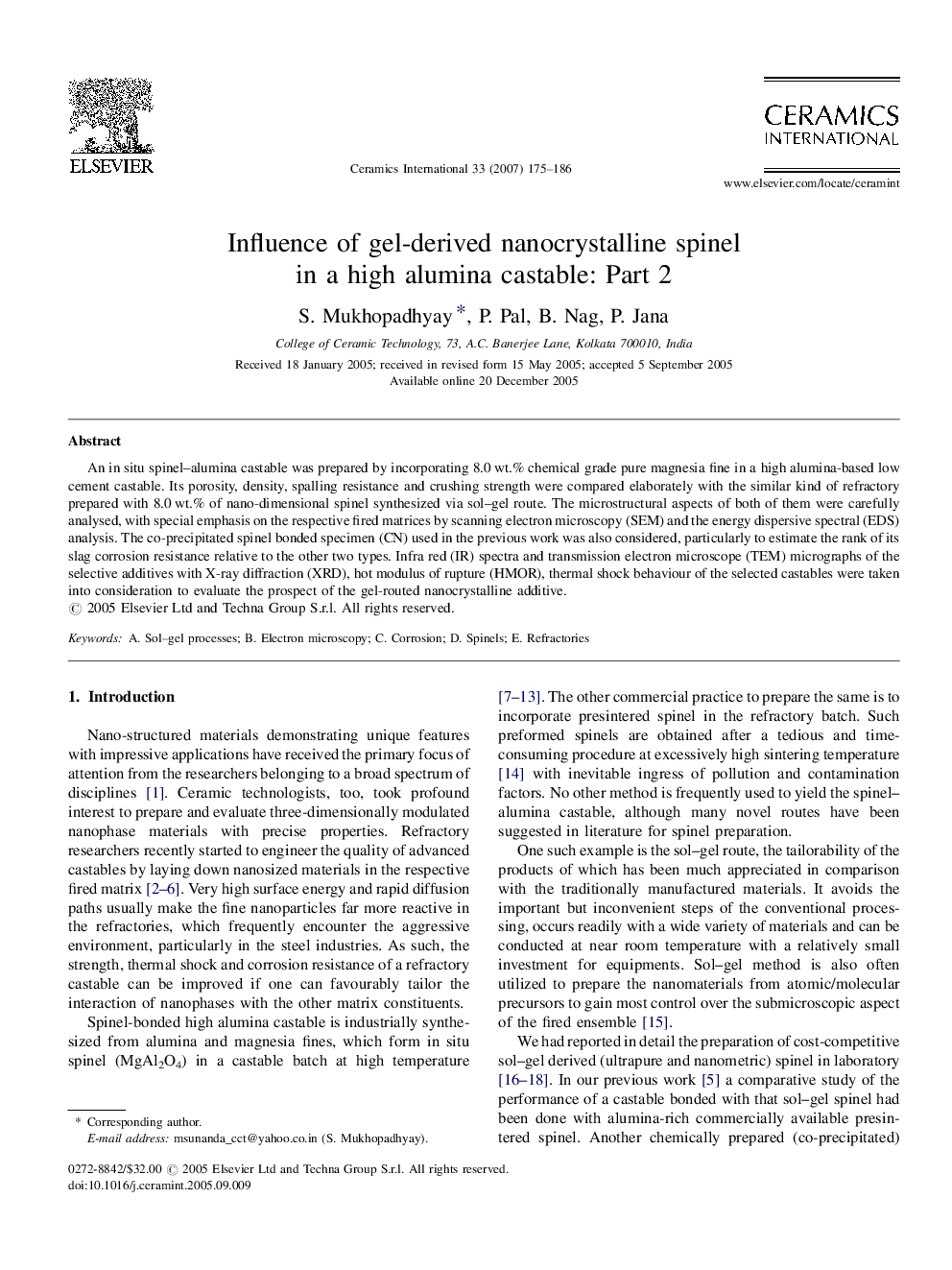| Article ID | Journal | Published Year | Pages | File Type |
|---|---|---|---|---|
| 1465096 | Ceramics International | 2007 | 12 Pages |
An in situ spinel–alumina castable was prepared by incorporating 8.0 wt.% chemical grade pure magnesia fine in a high alumina-based low cement castable. Its porosity, density, spalling resistance and crushing strength were compared elaborately with the similar kind of refractory prepared with 8.0 wt.% of nano-dimensional spinel synthesized via sol–gel route. The microstructural aspects of both of them were carefully analysed, with special emphasis on the respective fired matrices by scanning electron microscopy (SEM) and the energy dispersive spectral (EDS) analysis. The co-precipitated spinel bonded specimen (CN) used in the previous work was also considered, particularly to estimate the rank of its slag corrosion resistance relative to the other two types. Infra red (IR) spectra and transmission electron microscope (TEM) micrographs of the selective additives with X-ray diffraction (XRD), hot modulus of rupture (HMOR), thermal shock behaviour of the selected castables were taken into consideration to evaluate the prospect of the gel-routed nanocrystalline additive.
